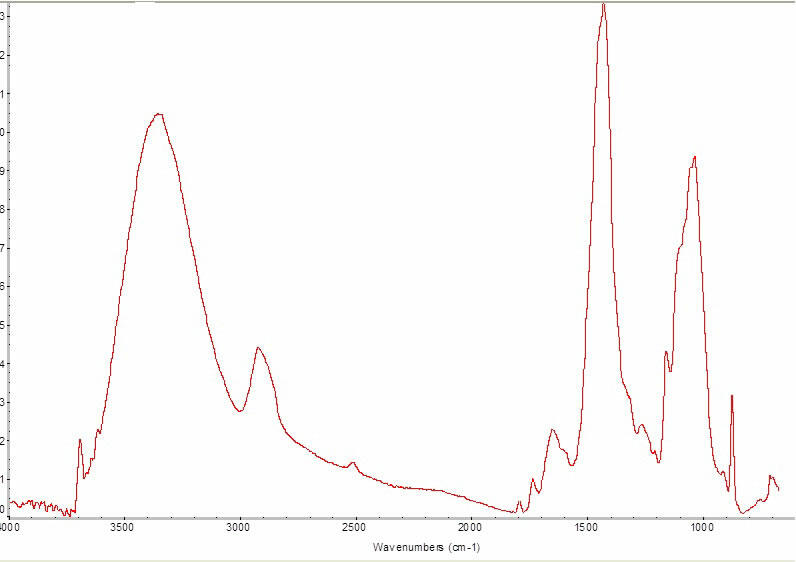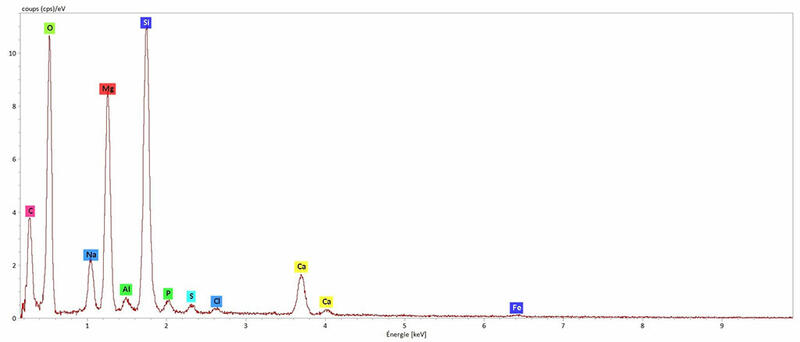
Chemical characterization of deposits and residues
Mineral and organic identification and quantification
- Qualitatively identify the mineral or organic chemical nature of process deposits, stickies, particles or residues present on your paper / board materials using advanced equipment (FTIR, X-SEM, GC/MS, etc.)
- Propose relevant qualitative and quantitative analyzes in order to solve your problems
- Compare the chemical nature of different samples
General informations
Different types of deposits can form during the industrial process because of contamination or physicochemical phenomena and thus adversely affect the performance of your process. Residues, stickies, stains may appear on your finished products, making them non-compliant or leading to non-functional processes.
The Chemical Analysis Laboratory has high-performance analytical equipment, specific identification libraries (paper / board, polymers, adhesives, etc.) as well as a perfect knowledge of industrial processes in order to offer you relevant analyzes adapted to the identification of the chemical nature of your deposits and residues. The combination of several analyzes allows a complete identification of your deposit or residue whether it is of mineral or organic origin, homogeneous or heterogeneous.
Technical Data and Achievements
Our various services are adapted to the nature of your samples, to the quantities available.
Visual observation, information on the origin of your deposit, residue (location, information on the process, etc.) will allow us, first of all, to orient the analyzes in order to best meet your needs.
Ash content
Determination of ash content in order to evaluate the mineral matter content, according to ISO 1762 standard (ignition at 525°C) or according to ISO 2144 standard (ignition at 900°C). The difference between these two temperatures makes it possible to evaluate the presence of carbonates.
Infrared microscopy analysis (FTIR)
Our infrared microscope uses different modes of analysis (transmission, reflection or ATR - surface analysis) to analyze all types of matrices.
The FTIR analysis identifies organic compounds as well as certain mineral fillers such as Kaolin, calcium carbonate, etc.
Comparison with spectra libraries or with the standard provided makes it possible to identify the constituents of the deposit.
X-ray SEM analysis
The X-ray microanalysis is performed under a Scanning Electron Microscope. An image of the sample is first taken in composition mode, showing the mineral part in light and the organic part in dark.
Qualitative X-ray microanalysis makes it possible to acquire the emission spectrum of the X photons of the atoms present and thus to identify the nature of the chemical elements present in the deposit, its ashes or even at the residue level.
A mapping of the different constituent elements of the sample can also be carried out.
GC / MS pyrolysis analysis
Pyrolysis thermally fragments the sample, chromatography separates the different constituents and detection by mass spectrometry allows the identification of each fragment.
The results are compared to our databases to identify the nature of the deposit or residue.
Characterization by specific analysis
- Identification by iodine staining
- Evaluation by observation under UV lamp
- Visual recognition of deposit by observation under an optical microscope.
Quantification of chemical constituents
The diversity of our analytical equipment allows us, depending on the nature of the constituents identified within the deposit or residue, to quantify them (for example, mineral elements by ICP spectrometry, and organic compounds by GC-MS or LC-MS).
 |
 |
|
| Infrared spectrum | Microanalysis-X |